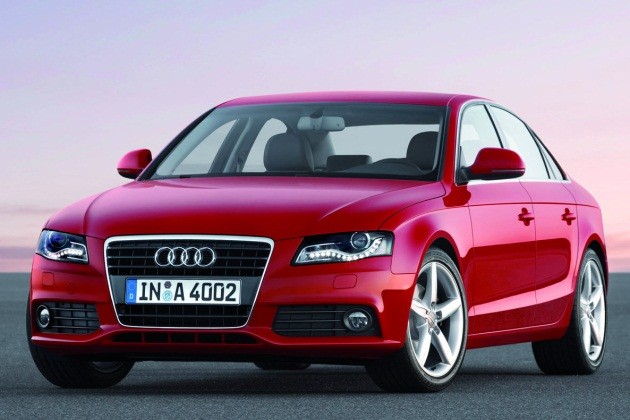Over the course of the last 20 years, each new Audi model has weighed around 10 percent more than its predecessor, but that all changed when the all-new 2009 Audi A4 (B8) debuted last year. The mid-size sedan gained less than 100 pounds over the previous model (B7), despite growing in every possible dimension. And when the next A4 arrives in five year’s time, Audi claims it will weigh less than the current model.
Heinrich Timm, head of Audi’s Lightweight Design Center, told us earlier today that the next generation A4 – likely due out in 2015 – will shed some 150 kg (330 pounds) over the B8. The move to drop the A4’s curb weight is part of a larger initiative by Audi to reduce the tonnage of its future vehicles by using more aluminum, innovative structural techniques and composites.
And the benefits of weight reduction aren’t just limited to fuel consumption and emissions. As any gearhead knows, weight affects every aspect of the vehicle’s dynamics – from handling to braking to acceleration. For every 220 pounds lost, a vehicle can accelerate to 60 mph in 20 fewer feet. Lose 440 pounds and the amount of runway saved nearly doubles.
While other automakers are employing high tensile steel to increase rigidity and reduce weight, the stuff costs nearly three-times more than a normal stamped piece. By limiting the use of tensile steel, the overall cost savings will allow Audi to utilize more exotic materials – carbon fiber in particular – to reduce weight and further enhance the driving experience.
As the father of the spaceframe, Timm knows all too well that weight reduction is the key to the next generation of automobiles. Not only will it decrease fuel consumption, increase safety and pay dividends for the driver, it’s the only way automakers can simultaneously meet new emission standards while delivering the content and driving experience customers expect. Timm says, “We want to bring it to a higher volume,” and the next generation A4 is sure to be the first in a long line of lightened Audis.
